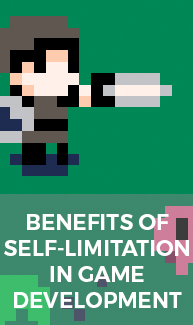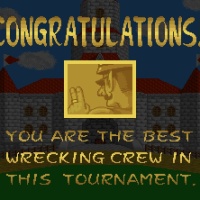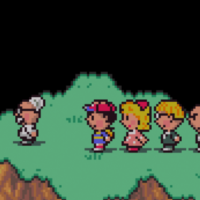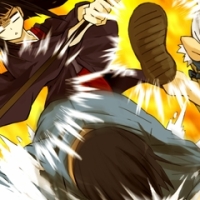
ASH: Archaic Sealed Heat
Developer(s): Mistwalker, Racjin
Publisher: Nintendo
Platform(s): DS
Release Date: October 4th 2007 (Japan exclusive)
Despite the relatively unchanging formulas that run throughout the genre, turn-based, grid-based strategy games have consistently managed to retain their popularity across every generation. With newcomers such as The Banner Saga joining long running series such as Civilization and Fire Emblem in leading the charge, it’s easy to find a game suitable for scratching your strategic itch on almost any platform. The DS in particular played host to a wide and diverse range of RPGs of every type, with Japanese-made titles in particular thriving in the console’s heyday. ASH: Archaic Sealed Heat fits nicely into the varied roleplaying lineup the system had to offer – it may not be quite as polished as its better-known DS strategy counterparts, but this Japan-exclusive release has a lot to offer for those looking for something original, in more ways than one.
Released exclusively in Japan in 2007, ASH was one of many titles developed by the then-new Mistwalker, a development studio founded by Final Fantasy creator Hironobu Sakaguchi. Following his departure from Square-Enix, Sakaguchi has remained involved in the JRPG scene, with the likes of Lost Odyssey, Blue Dragon and The Last Story being met with varying levels of commercial and critical success. However, despite collaborating on development with the experienced Racjin, as well as Nintendo taking up publishing duties, ASH failed to garner widespread attention.
At face value, the game’s setting is that of a relatively simple fantasy story. Shortly after becoming Queen, heroine Aisha (sometimes translated as Aisya) finds her kingdom on the receiving end of an attack by an evil demon, with the vast majority of its populace unable to stand up to its ferocious power. However, Aisha soon discovers she wields the remarkable power to return some of her fallen allies to life using their ashes (hence the origin of the game’s unique title). From here, a fairly standard adventure begins – a ragtag group of heroes come together to push back the darkness and save the world. While the scenario itself fails to offer anything particularly fresh, well-written and amusing interactions between a likeable cast of characters help to supplement the plot.
The battle system is perhaps where the game is at it’s most unique. Set on a grid, units are put into teams of three, but move around independently. Should one of those units attack an enemy, all three are brought into the same encounter. However, when attacking, actual distance from each enemy is taken into account – if a character wielding a sword is stood at some distance when one of their team engages the enemy, their effectiveness will be dramatically decreased, and they may be limited to simply throwing nearby debris. Ranged characters are effected in a similar way, but with the situation reversed. It’s an interesting system that does well to work dynamically for each battle situation, as well as require an extra degree of strategy and planning that can be immensely rewarding when used well, and will no doubt impress fans looking for a deeper-than-usual tactical experience.
Battle sequences are visually impressive and quite flashy, which is particularly noteworthy for a DS title – the game was actually the first and only DS title to make use of a unique 256MB game card, with increased storage holding Mobiclip cutscenes and FMV animations. With heavy emphasis on short but simple FMV sequences for each and every action in battle, it does seem as if the game was designed with that as it’s main draw. Unfortunately, it is difficult to argue that it really has much else going for it in regards to presentation, although Hideo Minaba‘s character designs serve as a nice departure from your more traditional fantasy affair. The fully touch screen-controlled movement system makes good use of the DS’s hardware features, although an abundance of menus and clunky layouts can lead to it becoming frustrating at times.
Outside of battles, characters are displayed as 2D sprites against 3D environments – an interesting idea, but ultimately one that suffers due to muddy textures and small sprites in generally uninteresting environments – other titles on the system succeeded in carrying out this concept with much better results, again stressing ASH‘s heavy focus on FMV assets over traditional presentation. During battle, your party members will carry out their actions on the bottom screen, while enemies act on the top. There is an odd disconnect here, as the two never actually interact – you merely watch gestures and reactions. It leaves you feeling that a much more simple approach, with sprites or 3D models in lieu of FMV sequences, could have actually benefitted the game more. Considering the high quality of the game’s concept and promotional artwork, as well as that displayed on the cover and manual, the generic feel of the FMV models stands out even more.
Thankfully, the presentation is backed up by a strong soundtrack from Hitoshi Sakimoto, who many a JRPG fan may recognise from titles such as Vagrant Story and Final Fantasy XII, accompanied by Masaharu Iwata. The pair had previously worked together on Tactics Ogre, with their compositions working well to create a grand, epic fantasy feel, meshing nicely with the traditional setting.
Critically, ASH was reasonably well-received, with Famitsu awarding it a 33/40. Commercially however, it did not fare as well, with a planned western localisation from Nintendo of America reaching as far as a working prototype and the casting of English voice actors before being canned, likely in light of a poor sales and a general lack of interest upon its Japanese release. Sadly, a fan translation of the game remains only partially finished, so for those in the west this flawed yet ambitious tactical title will likely remain a curio amongst the DS’s strong role-playing lineup.




















